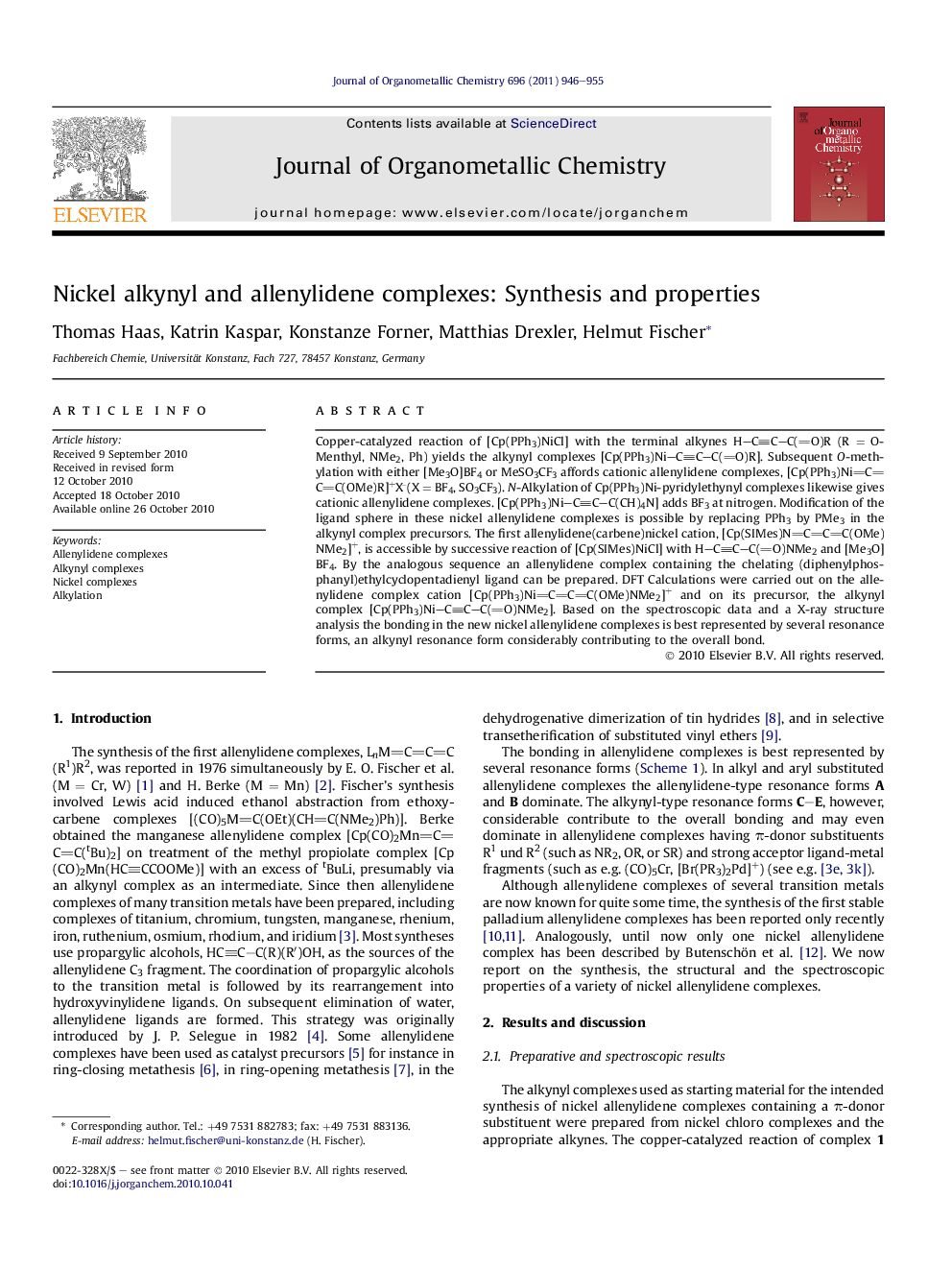| Article ID | Journal | Published Year | Pages | File Type |
|---|---|---|---|---|
| 1324775 | Journal of Organometallic Chemistry | 2011 | 10 Pages |
Copper-catalyzed reaction of [Cp(PPh3)NiCl] with the terminal alkynes H–CC–C(O)R (R = O-Menthyl, NMe2, Ph) yields the alkynyl complexes [Cp(PPh3)Ni–CC–C(O)R]. Subsequent O-methylation with either [Me3O]BF4 or MeSO3CF3 affords cationic allenylidene complexes, [Cp(PPh3)NiCCC(OMe)R]+X¯ (X = BF4, SO3CF3). N-Alkylation of Cp(PPh3)Ni-pyridylethynyl complexes likewise gives cationic allenylidene complexes. [Cp(PPh3)Ni–CC–C(CH)4N] adds BF3 at nitrogen. Modification of the ligand sphere in these nickel allenylidene complexes is possible by replacing PPh3 by PMe3 in the alkynyl complex precursors. The first allenylidene(carbene)nickel cation, [Cp(SIMes)NCCC(OMe)NMe2]+, is accessible by successive reaction of [Cp(SIMes)NiCl] with H–CC–C(O)NMe2 and [Me3O]BF4. By the analogous sequence an allenylidene complex containing the chelating (diphenylphosphanyl)ethylcyclopentadienyl ligand can be prepared. DFT Calculations were carried out on the allenylidene complex cation [Cp(PPh3)NiCCC(OMe)NMe2]+ and on its precursor, the alkynyl complex [Cp(PPh3)Ni–CC–C(O)NMe2]. Based on the spectroscopic data and a X-ray structure analysis the bonding in the new nickel allenylidene complexes is best represented by several resonance forms, an alkynyl resonance form considerably contributing to the overall bond.
Graphical abstractCopper-catalyzed reaction of [Cp(PPh3)NiCl] with the terminal alkynes H–CC–C(O)R (R = O-Menthyl, NMe2, Ph) yields the alkynyl complexes [Cp(PPh3)Ni–CC–C(O)R]. Subsequent O-methylation with either [Me3O]BF4 or MeSO3CF3 affords cationic allenylidene complexes, [Cp(PPh3)NiCCC(OMe)R]+X¯ (X = BF4, SO3CF3). The first allenylidene(carbene)nickel cation, [Cp(SIMes)NCCC(OMe)NMe2]+, is accessible by successive reaction of [Cp(SIMes)NiCl] with H–CC–C(O)NMe2 and [Me3O]BF4.Figure optionsDownload full-size imageDownload as PowerPoint slideResearch highlights►Copper-catalyzed reaction of chloro-nickel complexes afford alkynyl-nickel complexes. ►Alkylation of appropriate alkynyl-nickel complexes yields allenylidene complexes. ►In π-donor substituted allenylidene complexes alkynyl-like resonance forms dominate. ►The contributions of the different atoms of the allenylidene CCC fragment to the LUMO in strongly deviates from those in related tungsten and palladium complexes.
